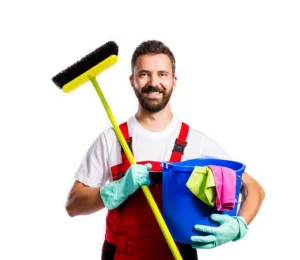As I wrote in my previous article, “Cleaning Things Up II: Technical Hygiene in the Covidian Age”, many of us are now hyperaware (almost to the point of bacillophobia) of cleaning often-used equipment surfaces in the education sector.

One educator pleaded for guidance, asking:
“Don’t we have any national disinfecting standards to follow?”
Standards that can guide educators and others in this timely hygiene challenge do indeed exist. Take for example the recent Hologate hygiene and safety standards for virtual reality summarized here. These standards are designed to “bring a uniform process to the location-based entertainment industry”, but are clearly applicable to other shared equipment environments or educational facilities. Although one must heed any local and national laws/regulations as well as the published guidance of government health agencies, the Hologate standards “are based on [our] years of experience operating systems and attractions”, they elaborate.
Some important perspectives are offered in the above standards document. Hologate reminds us about our changing times by suggesting “post coronavirus, we must accept the reality that we will be unable to operate as we have before. Cleanliness and disinfection will have to become paramount to customer’s confidence in enjoying our attractions and location-based entertainment”. These standards also remind us that hygiene must be maintained by professionals, and not merely “left to the customer” to address on their own.
Although location-based entertainment has suffered greatly during the recent economic and viral downturn, there is much to be learned for application in other environments, such as the education sector. The Hologate standards document reminds us that “virtual reality headsets and accessories [and, I would add historically, 3D glasses] have always been the target and topic of hygiene conversations, so it’s more important than ever to make sure that you have proper cleaning”.
The VR hygiene methods recommended by Hologate are outlined below, and apply to headsets, controllers, vests, and fasteners alike:
- Check, Clean, Dry (see the standards for a detailed breakdown)
- Use sanitizing wipes
- Employ Disposable VR Mask covers
- Consider UVC light cleaning as an added defense
Of particular interest is in these standards is Hologate’s justified concern over any undesirable opacity with an organization’s disinfecting efforts. Hologate strongly calls for highly visible action in this regard. They explain: “Post coronavirus, it is imperative to instill the confidence that everything is being done for your customer’s health and safety”. They add, “perception is everything and confidence can be gained through actions that are visible”. They remind us to have staff “be diligent and highly visible by customers when disinfecting between uses” and to position “customer anti-bacterial dispenser and/or disinfectant wipe stations throughout a facility so that they are visible and conveniently accessed”.
The Hologate standards also implore us to systematize and be more intentional about our hygiene efforts. The standards emphasize the need to ensure that “staff understands that constantly cleaning and disinfecting is now one of their top priorities”. In reviewing their standards, I strongly support their admonition to “slow down and adjust the throughput expectations for your team and customers to make accommodations for these added cleaning procedures”. Turnaround time on educational facilities or shared equipment in K12 or higher ed settings will need to be adjusted upwards. Similarly, their suggestion to “take photos and video of your team in action and post on your social media channels to let everyone know what you are doing” is sound advice. It instills confidence in an environment that has become all-too-scary on its own. Such a smart public-facing posture is vital, since educational environments tend to be much more afraid of Covid-19 than commercial environments are.
In my next and last installment in this series about technical hygiene, I will address where these standards fall short and highlight some other examples/recommendations worth your notice. —Len Scrogan

